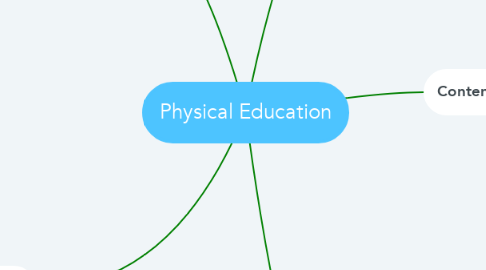Physical Education
by Lauryn Shirkie

1. Assessment
1.1. self-assessment by students
1.2. frequency of assessment
1.3. formal assessment by teacher
1.4. informal observation by teacher
1.5. peer assessment by students
1.6. self-recording own acheievements
2. Content
2.1. dance
2.2. gymnastics
2.3. athletics
2.4. adventure activities
2.5. aquatics
2.6. health-related activities
3. well-being:
3.1. students learn about how to monitor and improve their physical fitness
3.2. students learn how to develop positive relationships
3.3. students learn how to participate in actions that make a positive contribution to the school, community and wider world
3.4. students learn how to practice relaxation and mindfulness techniques
3.5. students learn howto feel positive about themselves
3.6. students learn how to make informed choices in relation to food, personal care and lifestyle
3.7. students learn the likely consequences of risky and unhealthy behaviour
4. Aims
4.1. personal and social development
4.2. to encourage an appreciation of physical activity and the benefits of an active lifestyle
4.3. to enable students to take responsibility for the organisation and development of their learning within the provided framework
5. Outcomes
5.1. Adventure activities: to demonstrate an understanding of the need for safety procedures, to demonstrate personal and responsible and social behaviour in adventure activity settings, to appreciate the necessity for appropriate personal equipment.
5.2. Aquatics: to perform basic personal survival skills, to perform at least 1 swimming stroke competently and safely, to co-operate with others in the learning environment.
5.3. Athletics: to run at a steady pace for a suitable level of fitness for for a length of time, display an appreciation and enjoyment of athletics, jump for a distance or height.
5.4. Dance: cooperate in groups , select and perform dances, to develop knowledge or understanding and skills in a variety of dance forms, to describe and analyse and interpret dances, recognising differences.
5.5. Gymnastics: to demonstrate control of muscular tension and body pose, to refine and increase technical competence of their actions, to observe and analyse the work of others while demonstrating an understanding of the criteria for appreciation.
5.6. Health-Related Activity: to demonstrate an understanding of the effects of exercise on the body, to plan for and participate in physical activity, to identify the components of health-related activity through involvement in relevant physical activity.


